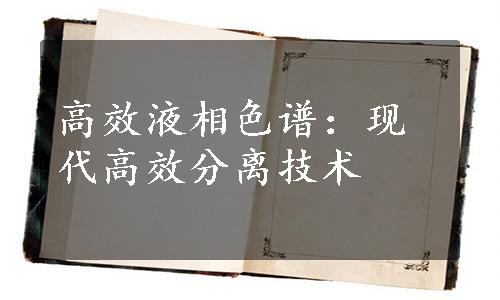
高效液相色谱法(high performance liquid chromatography,HPLC)是以液体为流动相的一种现代色谱分析方法。气相色谱解决了20%的低沸点(350℃)有机混合物的分析,而高效液相色谱可实现对高沸点、热不稳定有机化合物及生化试样的高效分离,在分析化学中占有重要地位。
高效液相色谱和气相色谱的主要差别体现在流动相的不同,前者的流动相为液体,后者的流动相为气体。液体的扩散系数只有气体的万分之一至十万分之一,液体的黏度比气体大一百倍,而密度为气体的一千倍左右,见表8-5。这些差别将对色谱过程产生影响。
表8-5 影响色谱峰扩展的主要物理性质(www.xing528.com)

液相色谱用英文描述如下。
The mobile phase can be a gas or a liquid, whereas the stationary phase can be only a liquid or solid.When the separation involves predominantly a simple partitioning between two immiscible liquid phases, one stationary and the other mobile the process is called liquid-liquid chromatography (LLC).When physical surface forces are mainly involved in the retentive ability of the stationary phase, the process is denoted liquid-solid (or adsorption)chromatography (LSC).
免责声明:以上内容源自网络,版权归原作者所有,如有侵犯您的原创版权请告知,我们将尽快删除相关内容。




